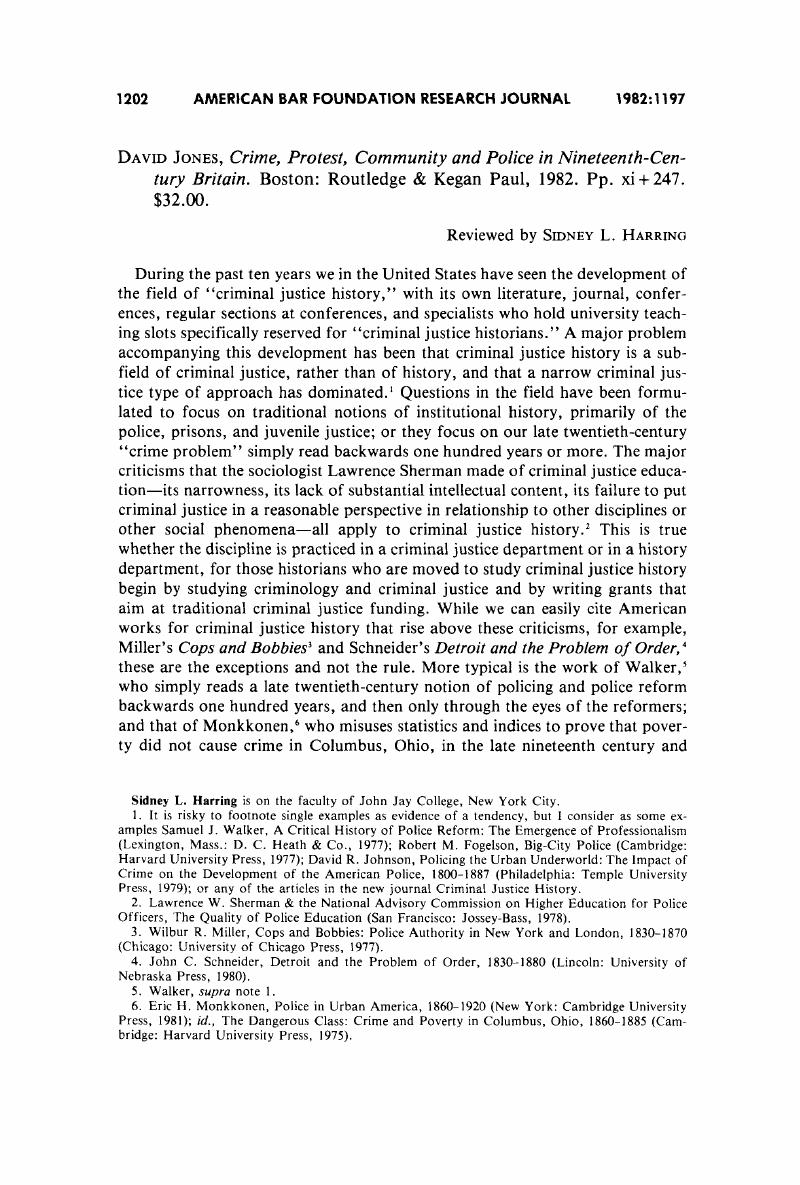No CrossRef data available.
Published online by Cambridge University Press: 11 March 2019

1 It is risky to footnote single examples as evidence of a tendency, but I consider as some examples Samuel J. Walker, A Critical History of Police Reform: The Emergence of Professionalism (Lexington, Mass.: D. C. Heath & Co., 1977); Robert M. Fogelson, Big-City Police (Cambridge: Harvard University Press, 1977); David R. Johnson, Policing the Urban Underworld: The Impact of Crime on the Development of the American Police, 1800–1887 (Philadelphia: Temple University Press, 1979); or any of the articles in the new journal Criminal Justice History.Google Scholar
2 Lawrence W. Sherman & the National Advisory Commission on Higher Education for Police Officers, The Quality of Police Education (San Francisco: Jossey-Bass, 1978).Google Scholar
3 Wilbur R. Miller, Cops and Bobbies: Police Authority in New York and London, 1830–1870 (Chicago: University of Chicago Press, 1977).Google Scholar
4 John C. Schneider, Detroit and the Problem of Order, 1830–1880 (Lincoln: University of Nebraska Press, 1980).Google Scholar
5 Walker, supra note 1.Google Scholar
6 Eric H. Monkkonen, Police in Urban America, 1860–1920 (New York: Cambridge University Press, 1981); id., The Dangerous Class: Crime and Poverty in Columbus, Ohio, 1860–1885 (Cambridge: Harvard University Press, 1975).Google Scholar
7 Eric Hobsbawm & George Rudé: Captain Swing (New York: Random House, 1968).Google Scholar
8 Edward P. Thompson, Whigs and Hunters: The Origin of the Black Act (New York: Pantheon Books, 1976).Google Scholar
9 Douglas Hay et al., Albion's Fatal Tree: Crime and Society in Eighteenth Century England (New York: Pantheon Books, 1976).Google Scholar
10 Friedrich Engels, The Condition of the Working Class in England (Moscow: Progress Publishers, 1973); John Foster, Class Struggle and the Industrial Revolution (London: Weidenfeld & Nicolson, 1974).Google Scholar
11 Lane, Roger, Crime and Criminal Statistics in Nineteenth-Century Massachusetts, J. of Soc. Hist., Winter 1968, at 156–63.CrossRefGoogle Scholar
12 Lawrence M. Friedman & Robert V. Percival, The Roots of Justice: Crime and Punishment in Alameda County, California, 1870–1910, at 16 (Chapel Hill: University of North Carolina Press, 1981).Google Scholar
13 Mind you, two of seven chapters closely resemble the work of Roger Lane; the other five are distinctly of the British social history school and far better.Google Scholar